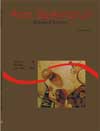<b>Ex<em> vitro</em> and <em>in vitro</em> leaf anatomy of <em>Tabebuia roseo alba</em> (Ridl.) Sand. – Bignoniaceae</b> - DOI: 10.4025/actascibiolsci.v31i3.1937
Keywords:
anatomy, leaves, stomata, central nervure, in vitro, ex vitro
Abstract
Considering the importance of knowledge of anatomical structures in the protocol definition for the micropropagation of the ipê-branco, this study compared the in vitro and ex vitro internal structure of leaves. For anatomical evaluations, the first leaf in vitro with 30 days of growth and adult plants were used. The anatomical study of leaves was based on microscope examination from cross-sectional and paradermic sections from the leaf blade. The leaf structures from plants ex vitro show uniseriate skin, and mesophyll with dorsiventral organization. They are hipostomatics and trichome is present in all faces. Leaves ex vitro was thicker that culture in vitro in limb, central nervure, epidermis and palisade and spongious parenchyma. In leaves in vitro, cuticle and sclerenchyma are absent. Leaves of ex vitro presented minor numbers of stomata and greater number of trichromes when compared with culture in vitro. Stomata of in vitro are larger than stomata ex vitro.Downloads
Download data is not yet available.
Published
2009-07-01
How to Cite
Abbade, L. C., Paiva, P. D. de O., Paiva, R., Castro, E. M. de, Centofante, A. R., & Oliveira, C. de. (2009). <b>Ex<em> vitro</em> and <em>in vitro</em> leaf anatomy of <em>Tabebuia roseo alba</em> (Ridl.) Sand. – Bignoniaceae</b> - DOI: 10.4025/actascibiolsci.v31i3.1937. Acta Scientiarum. Biological Sciences, 31(3), 307-311. https://doi.org/10.4025/actascibiolsci.v31i3.1937
Issue
Section
Vegetable Morphology & Physiology
DECLARATION OF ORIGINALITY AND COPYRIGHTS
I Declare that current article is original and has not been submitted for publication, in part or in whole, to any other national or international journal.
The copyrights belong exclusively to the authors. Published content is licensed under Creative Commons Attribution 4.0 (CC BY 4.0) guidelines, which allows sharing (copy and distribution of the material in any medium or format) and adaptation (remix, transform, and build upon the material) for any purpose, even commercially, under the terms of attribution.
Read this link for further information on how to use CC BY 4.0 properly.
0.6
2019CiteScore
31st percentile
Powered by 

0.6
2019CiteScore
31st percentile
Powered by 











1.png)




3.png)













